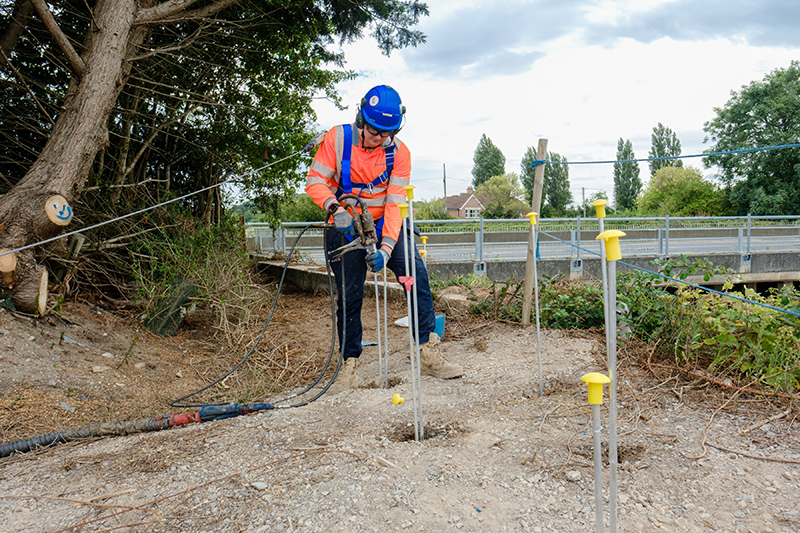
David Hedley, commercial & infrastructure lead at ground engineering specialist Mainmark UK, warns that as weather remains erratic, the construction sector must stay alert to the risks of subsidence and actively monitor for warning signs to prevent long-term damage
As a result of climate change, extreme weather conditions are becoming more frequent across Scotland. While the immediate effects, such as flooded roads, damage to buildings and general disruptions are easily recognised, a serious substructural issue is developing underground which requires greater attention.
According to recent MET Office data, this spring was Scotland’s driest since 1976. It followed a particularly harsh January, when temperatures in the north dropped to -18.9°C – the lowest recorded in the UK in 15 years.
These fluctuations in weather can significantly compromise soil stability and undermine the foundations of buildings and infrastructure, making subsidence, the downward movement of the ground supporting structures, a growing concern for Scotland’s built environment.
The A83 at Rest and Be Thankful, straddling Glen Croe is a text-book example of ground instability driven by weather and remains one of Scotland’s most structurally unstable roads. Due to its mountainous geography the area is very prone to the effects of heavy rain and drier climates, resulting in subsidence and landslides. Between 2020 and 2024 the road has been closed on average one day per week.
Weather’s effect on ground stability
The majority of subsidence cases reported to Mainmark occur after periods of prolonged heat, especially in areas of clay-rich soil, which are widespread across areas of Scotland, including the Central Lowlands, Southwest Scotland and the East Coast Plains.
In drier, hotter conditions, moisture evaporates from the ground causing the soil to contract and shrink. Over time, this creates significant voids beneath buildings and infrastructure, which can cause foundations to shift, resulting in cracks in walls and floors.
Rain, which is a defining feature of Scotland’s climate (the country averaging around 250 rainy days per year) can also be a key contributor to cases of subsidence. Heavy rainfall and flooding in particular present a significantly dangerous geo-technical risk. When the ground becomes saturated with water and soil fines are washed away, creating large voids beneath structures. Excessive water infiltration weakens the ground so much that it can no longer bear the load of the above infrastructure or building, resulting in roads sinking, and buildings becoming structurally compromised.
The damage caused by heavy rain and flooding is particularly severe in areas with poor water management, like Glasgow and parts of the Central Belt which have ageing sewer and drainage systems and struggle to cope with intense rainfall. These areas fall victim to an increased likelihood of water pooling, soil erosion and, thus, subsidence.
How to mitigate subsidence risk
Mainmark recommend that comprehensive inspections be undertaken following periods of adverse weather, be it extended dry spells, heavy rainfall, or freezing conditions. These checks should aim to identify early signs of ground movement, such as cracks in walls or flooring, uneven paving, sunken surfaces, or unexplained tilting in structures.
If these checks aren’t made and warning signs are missed the consequences can be significant. Undetected subsidence or delayed intervention can result in costly repairs, whilst the knock-on effect can also lead to additional problems such as business disruptions in warehouses, long-term road closures and delays in public transport operations.
Mainmark has found that in many instances, when identified in a timely manner, foundations and structures affected by extreme weather and changing ground conditions can be repaired. Specialised methods, such as the firm’s Teretek® Resin Injection technology, can re-level and re-support affected structures in a cost-effective way, with minimal disruption to surrounding areas and operations.
As Scotland’s climate continues to shift, with drier springs, colder winters, and continued intense rainfall, the need for a proactive approach to subsidence risk management is greater than ever. Staying alert to the impact of weather on ground conditions and acting promptly can help protect the long-term stability of key buildings and infrastructure throughout the country.











